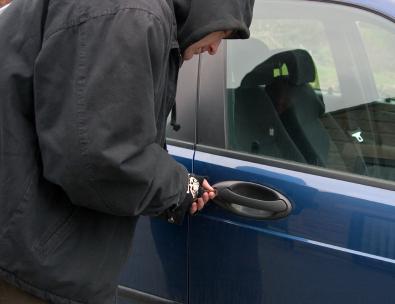 Preliminary numbers indicate that 2011 was another consecutive year of declining vehicle thefts, according to the National Insurance Crime Bureau.
Preliminary numbers indicate that 2011 was another consecutive year of declining vehicle thefts, according to the National Insurance Crime Bureau.
Four of the top 10 Metropolitan Statistica Areas reported more thefts in 2011 (+925 collectively) while the remaining six posted fewer (-2,017 collectively).
The decline in thefts continues a downward trend that began in 2004, according to Frank G. Scafidi, director of public affairs for the NICB. He said a number of factors are behind this trend, particularly the use of anti-theft technologies.
“Whether it’s on the manufacturing end—where vehicles today roll off assembly lines with more theft protection than ever, or on the law enforcement end—where bait cars and license plate readers are enabling cops to be more effective in arresting and convicting car thieves, technology continues to deliver theft protection,” Scafidi said.
The ranking of hot spots is a reflection of vehicle thefts on a per capita basis. An area with a much smaller population and a moderate number of thefts can, and often does, have a higher theft rate than an area with a much more significant vehicle theft problem and a larger population to absorb it.
For 2011, the 10 MSAs with the highest vehicle theft rates were:
| 2011 Ranking | 2010 Ranking | |
| 1. | Fresno, Calif. | 1 |
| 2. | Modesto, Calif. | 2 |
| 3. | Bakersfield-Delano, Calif. | 3 |
| 4. | Spokane, Wash. | 4 |
| 5. | Yakima, Wash. | 10 |
| 6. | San Francisco/Oakland/Fremont, Calif. | 9 |
| 7. | Stockton, Calif. | 7 |
| 8. | Anderson, S.C. | 33 |
| 9. | Vallejo-Fairfield, Calif. | 5 |
| 10. | Visalia-Porterville, Calif. | 8 |
NICB’s Hot Spots report examines vehicle theft data obtained from the National Crime Information Center for each of the nation’s MSAs. MSAs are designated by the Office of Management and Budget and often include areas much larger than the cities for which they are named. For example, the Fresno, Calif., MSA includes all thefts within the entire county of Fresno, not just the city of Fresno.
The FBI’s preliminary 2011 crime statistics released last week indicate a 3.3 percent drop in vehicle thefts from the 2010 number of 737,142.
Although national vehicle thefts continue to decline, the NICB still recommends these methods and devices to guard against would-be thieves:
• Remove keys from the ignition.
• Lock doors /close windows.
• Park in a well-lit area.
• Warning Device — A visible or audible device, which alerts thieves that a vehicle is protected. Popular devices include audible alarms, steering column collars, steering wheel/brake pedal lock, brake locks, wheel locks, theft deterrent decals, identification markers in or on vehicle, VIN etching and micro dot marking.
• Immobilizing Device — A device that prevents thieves from bypassing the ignition and hot-wiring the vehicle. Some electronic devices have computer chips in ignition keys. Other devices inhibit the flow of electricity or fuel to the engine until a hidden switch or button is activated. Some examples are smart keys, fuse cut-offs, kill switches and wireless ignition authentication.
• Tracking Device — Emits a signal to police or a monitoring station when the vehicle is stolen. Some systems employ “telematics” which combine GPS and wireless technologies to allow remote monitoring of a vehicle. If the vehicle is moved, the system will alert the owner and the vehicle can be tracked via computer.
Anyone with information concerning vehicle theft can report it anonymously by calling toll-free at 1-800-TEL-NICB (1-800-835-6422), texting keyword “fraud” to TIP411 (847411) or by visiting its website at www.nicb.org. Or, iPhone or iPad users can download the NICB Fraud Tips app to make it easy to quickly send a tip and get a response.












